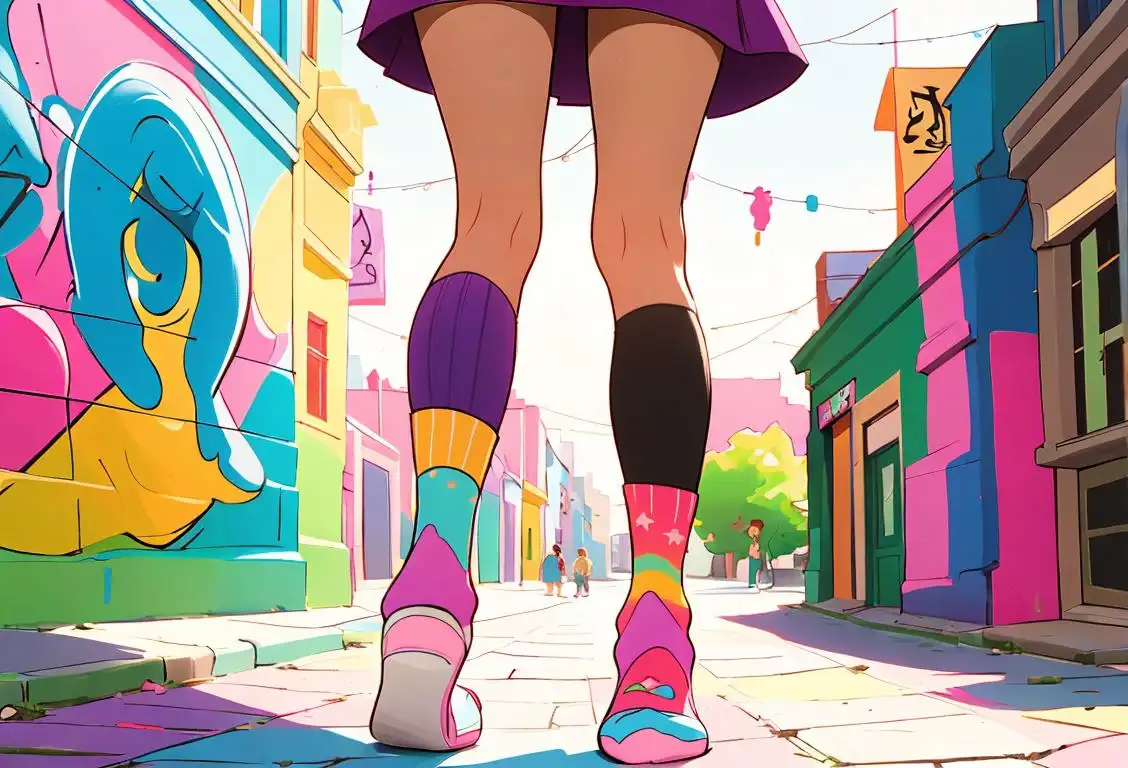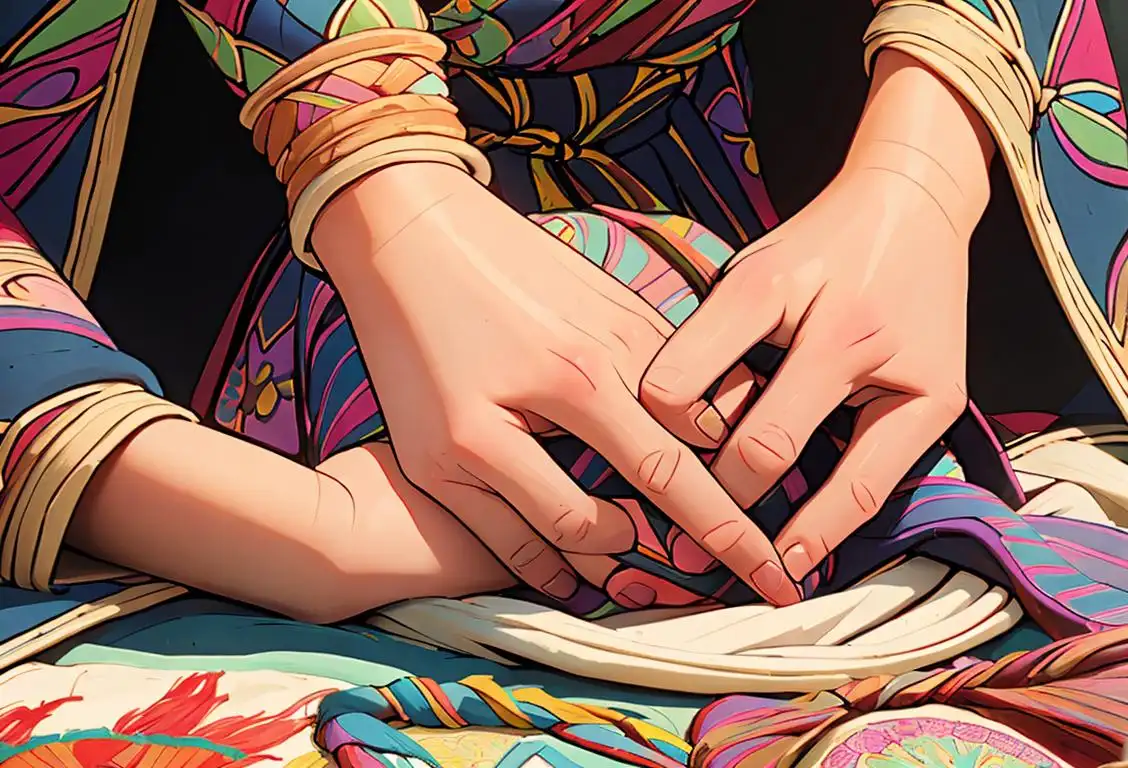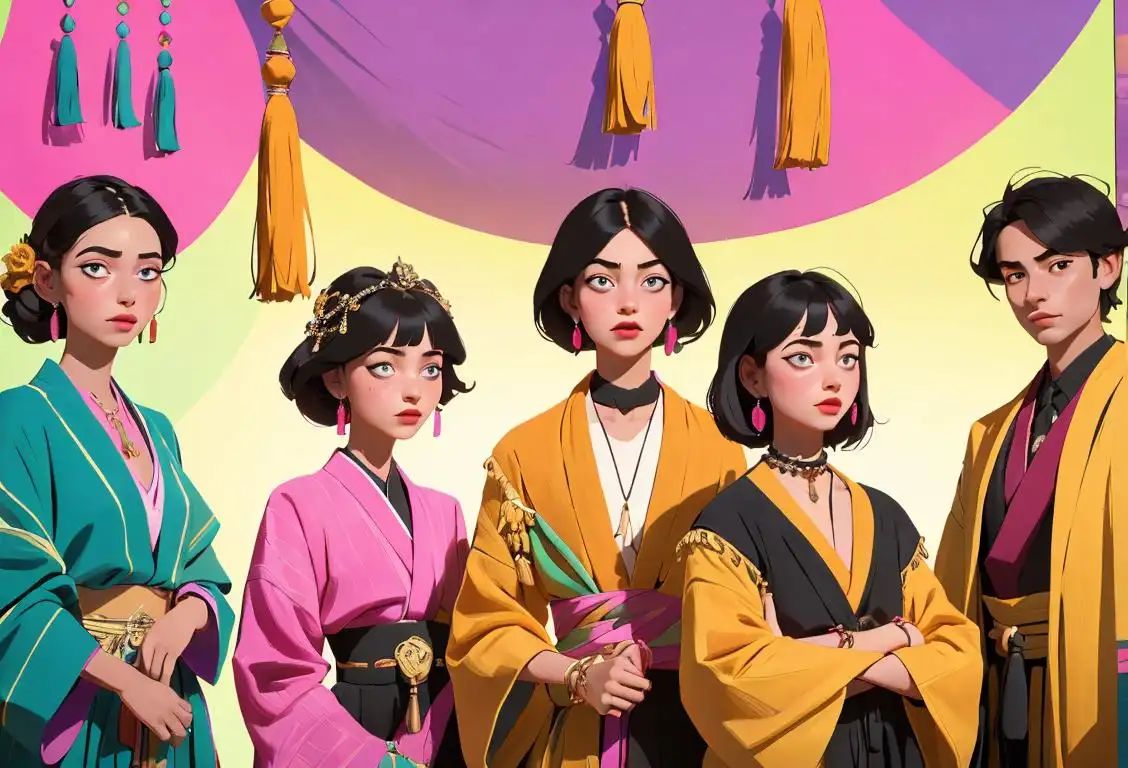National Socks Day

Welcome to the fascinating world of National Socks Day! Get ready to dive into a world of cozy feet and quirky sock fashion. Whether you're a sock enthusiast or just looking to add a touch of fun to your wardrobe, this is the day for you.
When is Socks Day?
It's national socks day on the 4th December.
The Origins of National Socks Day
Ever wondered why we dedicate a whole day to socks? Well, let me take you on a journey through the internet history of this national day. National Socks Day came into existence when sock lovers from around the world decided to unite and celebrate their favorite foot warmers.
It all started on a chilly December day, back in 2010. A group of friends, tired of cold feet and uninspiring plain socks, rallied together to bring more attention to this oft-overlooked staple of our everyday attire. They wanted the world to realize that socks could be much more than just functional; they could be a fashion statement, a form of self-expression, or even a conversation starter.
With their enthusiasm and a sprinkle of internet magic, National Socks Day was born. Since then, it has gained momentum and is now celebrated by sock enthusiasts and fashionistas alike.
How to Celebrate National Socks Day
Now that you know the backstory, it's time to step into the celebrations! Here are a few ways you can make the most out of National Socks Day:
- Go crazy with sock fashion: Wear your most colorful, patterned, or wacky socks throughout the day. Let your feet be the center of attention!
- Organize a sock exchange party: Get together with your loved ones and exchange socks. It's like a Secret Santa, but with foot warmers.
- Support a cause: Many charities and organizations distribute socks to those in need. Use this day as an opportunity to donate socks or get involved in fundraising efforts.
- Learn sock-related skills: Ever wanted to knit or crochet socks? National Socks Day is the perfect occasion to explore your sock-making talents.
- Share your sock love on social media: Capture your most creative or favorite sock selfies and share them with the hashtag #NationalSocksDay.
Did You Know?
Did you know that socks have existed for thousands of years? The ancient Egyptians, Greeks, and Romans all wore some form of foot covering similar to socks. Thankfully, we now have a vast array of choices beyond simple linen or animal skin!
History behind the term 'Socks'
1200
Early Origins
The history of socks can be traced back to around the 12th century. It is believed that the first known socks were made from animal skins or fur, providing warmth and protection to the feet during colder seasons. These early socks were primarily crafted by hand and were a luxury item worn by the elite.
1589
Knitting Invention
The art of knitting socks emerged sometime around the late 16th century. In 1589, the invention of the knitting machine by William Lee revolutionized the production of socks. This invention enabled the mass production of knitted socks, making them more accessible to a wider population.
1800
Industrial Revolution
The Industrial Revolution of the 19th century brought significant advancements to the sock industry. The introduction of steam-powered machines and new manufacturing techniques further increased the production and availability of socks. Sock factories became commonplace, leading to lower costs and greater variety in designs and materials.
1938
Nylon Innovation
In 1938, the revolutionary material called nylon was introduced. This synthetic fiber quickly became popular for sock production due to its durability, elasticity, and affordability. Nylon socks gained widespread acceptance and replaced traditional natural fibers such as cotton and wool in many cases.
1948
Athletic Socks and Tube Socks
The post-World War II era witnessed the rise of athletic socks. Tube socks, which are seamless and stretchy, gained popularity among athletes and the general public alike. These socks offered improved comfort, support, and ventilation, making them ideal for various sports activities.
1990
Fashion Statement
As fashion trends evolved, socks became more than just a practical garment. In the 1990s, wearing colorful and patterned socks became a fashion statement. Socks became a way to express personal style, with various designs, lengths, and materials available to suit individual preferences.
Did you know?
Did you know that socks have existed for thousands of years? The ancient Egyptians, Greeks, and Romans all wore some form of foot covering similar to socks.Tagged
fun fashion crafts charityFirst identified
22nd June 2016Most mentioned on
4th December 2020Total mentions
303Other days
Socks Day
Avril Lavigne Appreciation Day
Textiles Day
Tassel Day
Christmas Jumpers Day
Pom Day
Dress Like Your Inner Hoe Day
Ugly Christmas Sweater Day
Nail Polish Day
Hat Day







